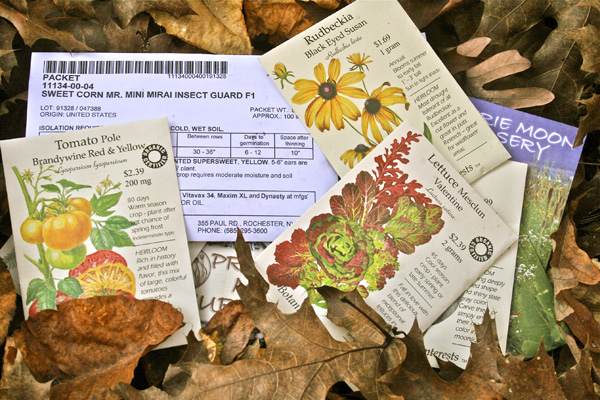Use these next few weeks to get ready to plant | Starting from seed

By Barb Delisio
OSU Master Gardener Volunteer
We’re going to talk about just what you need to get seeds started indoors. At a later time we’ll discuss garden soil, putting the plants out into the garden, and everything else needed to grow your plants successfully outdoors.
First, you must have the seeds of what you want to germinate. There are two options for getting started: Buy your seeds in seed packs and/or plant the seeds you saved from last year. If you saved seeds from your best plants, you have to make sure they’re “clean.” That means they have been treated by either hot water or chlorine to kill any bacterial pathogens on or within the seed (OSU Extension fact sheet HYG 3085).
If I’m going to go through all the time and effort to grow strong sturdy plants, I’m going to go with the best seeds I can get. So I buy my seeds in packages that show the crop, cultivar, germination time and percentage, as well as chemical treatment already given to them. That gives me a step up in growing the best plants I can.
The second thing to consider is the container(s) for sowing the seeds. Here you have many options — sod flats, fiber trays, plastic trays, clay and plastic pots, peat pots, compressed peat pellets and plastic 4-6-9 packs. It just depends on what you prefer or have had luck with in the past. If you are buying new containers to plant your seeds in, all you have to do is add your growing medium. Any containers that have been used previously should be thoroughly washed in soap to remove all debris and then rinsed in a solution of one part chlorine bleach to 10 parts of water. Let the containers dry naturally before filling with planting medium.
The growing medium used for starting seeds should be loose, well-drained and fine-textured. Many synthetic mixtures, which contain no soil, are available at local garden shops. These contain a combination of peat moss and vermiculite or peat moss and perlite. They have little fertility and the seedlings must be watered with a diluted fertilizer solution soon after they emerge. You can also use a mixture of about one-third loam garden soil and two-thirds vermiculite, but remember any garden soil must be sterilized before seeds are planted in it. Purdue University Extension has a good fact sheet on sterilizing soils. For me, it’s easier and more time efficient to visit my favorite nursery and get a bag of seed-starting mix, usually soil free.
This should give you what you need to get ready for planting. We still have a few weeks before seeds have to be planted, so we’ll follow with more directions in the weeks to come.
A fact sheet with details can be found at: http://go.osu.edu/startseeds.
 43
43

